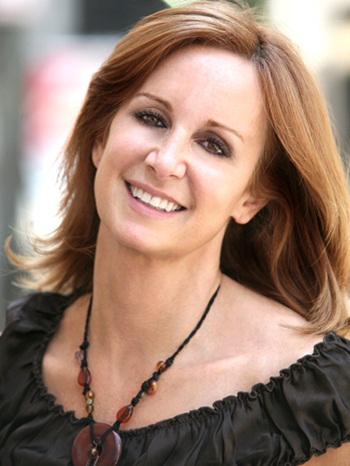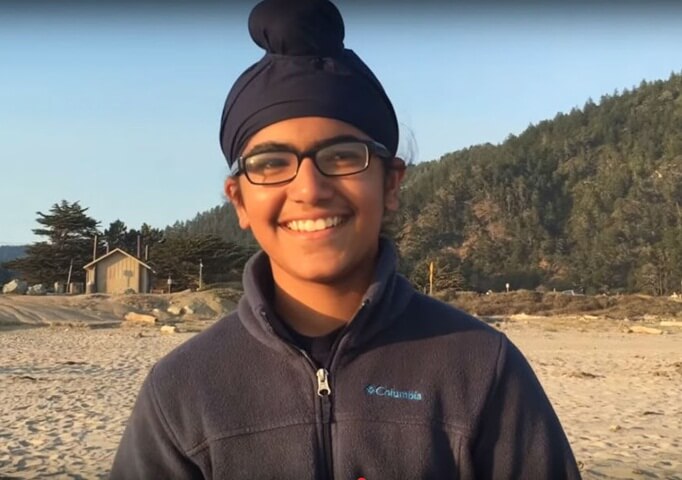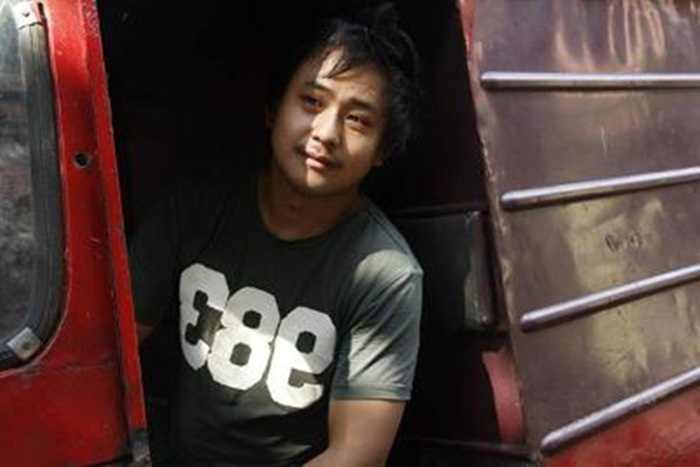 One of the celebrated documentary filmmakers from the United States, Andrea Kalin is a steadfast voice of protest, encouragement, empowerment and emancipation. Her Red Lines, a documentary film exposing an inhumane crisis through a rare window to the Syrian Conflict from the trenches to the halls of power, is to be screened at Mumbai Women’s International Film Festival (MWIFF) this year. Andrea Kalin has walked through disaster zones and penetrated remote tropical rain forests to capture human stories through her camera. Her filmography includes such award-winning documentary films as Worlds of Sound, Soul of a People, Allah Made Me Funny, Talking Through Walls, Partners of the Heart, Prince Among Slaves, Something the Lord Made, No Evidence of Disease, and The Pact. Most of her films have travelled the world over. Indian Eagle catches up with Andrea Kalin, the founder of Spark Media, to share with you a picture of her daring spirit as a no-nonsense filmmaker, her efforts to empower women across the world, her view on documentary filmmaking, and her wish to shoot films in India. The excerpts from the interview are as follows:
One of the celebrated documentary filmmakers from the United States, Andrea Kalin is a steadfast voice of protest, encouragement, empowerment and emancipation. Her Red Lines, a documentary film exposing an inhumane crisis through a rare window to the Syrian Conflict from the trenches to the halls of power, is to be screened at Mumbai Women’s International Film Festival (MWIFF) this year. Andrea Kalin has walked through disaster zones and penetrated remote tropical rain forests to capture human stories through her camera. Her filmography includes such award-winning documentary films as Worlds of Sound, Soul of a People, Allah Made Me Funny, Talking Through Walls, Partners of the Heart, Prince Among Slaves, Something the Lord Made, No Evidence of Disease, and The Pact. Most of her films have travelled the world over. Indian Eagle catches up with Andrea Kalin, the founder of Spark Media, to share with you a picture of her daring spirit as a no-nonsense filmmaker, her efforts to empower women across the world, her view on documentary filmmaking, and her wish to shoot films in India. The excerpts from the interview are as follows:
Is it the first time that your documentary film Red Lines is traveling to India for screening at Mumbai Women’s International Film Festival?
Yes. I am excited to say that Mumbai Women’s International Film Festival will be Red Lines’ Indian premiere.
Your films have made rounds of international film festivals across the world and earned several prestigious awards. What do you think of MWIFF?
I have not had the opportunity to visit MWIFF with my previous films, and I am deeply honored that Red Lines has been selected for screening at this year’s Festival. Because of its support for women filmmakers and women-centric issues as well as subjects, I think that MWIFF is an ideal venue for Red Lines’ Indian premiere. One of the film’s central protagonists, Razan Shalab-al Sham is a young activist, who is as set on delivering humanitarian aid to the refugees struggling to survive as she is on creating opportunities for women that will continue beyond the conflict. One of the most moving scenes I captured was not necessarily the most dramatic or dangerous. In August 2013, I was in Gazientep, a Turkish city on the border with Syria, about 30 miles from Aleppo. Razan was leading a political training course for women activists who ventured to Turkey on their own, dodging land mines and crossing hazardous borders to participate. The setting was a typical hotel conference room. The props were a basic white board and a homemade ballot box. Despite the unremarkable setting, the transformation I witnessed was remarkable. “We are dying to vote,” I was told by the women. Intrinsically I understood that this statement was not a figure of speech, but a harsh reality. People were literally dying in thousands because they were seeking self-determination and a right to vote. These activists were willing to risk death just for a drill. Seeing their commitment made me rethink my assumptions. I learned more about the democratic process in an ancient border city in Turkey than in Washington, DC. This was a deeply moving revelation for me, and one that I hope will resonate similarly with MWIFF audiences.
Would you like to share something (storyline) about the documentary film Red Lines?
Clearly, this is a huge political news story, but we’re also telling the story in the context of film. This is not a journalistic treatment, but a documentary. We’re making art.
How these two threads intersect is fascinating.
From the beginning we wanted to try to establish Mouaz and Razan’s crazy agendas and schedules. Moving from the dust and sunlight to suits, Big Ben and inside meetings with members of British Parliament, representatives from the USA Congress, or officials from the White House, we wanted to provide right away what being on the road means for these two young activists.
During the meeting in London, when we flash back to Khirbet-al Joz, the audience gets a sense of “this is what we saw.” It is an opportunity for the audience to also become a witness. This was a good opportunity to reflect on the contrasts our film tries to expose; to show the daunting gap in understanding between what was happening on the ground and in the halls of power. That prevailing disconnect has had grave consequences, which we are embroiled in today.
What inspired you to shoot the horrors of the Syrian conflict and penetrate into the halls of power through the eyes of two young activists, in the documentary?
As chaos in Syria continues to spread, and the United States finds itself getting pulled back into Iraq to prevent total regional collapse, Red Lines becomes more and more required viewing for anyone who needs context and an entry point into these rapidly escalating and complex events.
We want people to become enraged but more importantly we want people to become engaged. We want people to be inspired by Mouaz and Razan – two college-age youths, with almost no help, who take it upon themselves to try to save their country, risk their lives to smuggle humanitarian aid, and do everything in their power to topple a dictator who is killing his own people.
While world leaders, particularly those in the USA, are focused on toppling ISIS, Red Lines helps viewers understand how an organization like ISIS emerged, the root causes of the fighting, and how the conflict turned into one of the most daunting humanitarian catastrophes of our time. The numbers tell some of the story. About a year ago, the United Nations stopped tallying the number of the killed because there was no independent source still alive to verify the data. At that time, there were 100,000 dead. Most good estimates now claim there are 190,000 killed, rapidly heading to 200,000. It’s important for a film like Red Lines to humanize these statistics and to help audiences realize there is a human being with a heart and soul behind each number. The humanity behind these numbers should not be forgotten.
Too often we hear about these unimaginable atrocities yet we go about our day-to-day lives like nothing is happening. There’s an emotional divide between what we intellectually know about the world and how we feel about that knowledge. I wanted to close that gap with this story.
Today, you have several award-winning documentaries and films to your credit. How did filmmaking happen to you?
One can learn how to be a filmmaker, but what you can’t learn is the passion to pursue causes and advocate. I studied criminal justice in college and thought I would pursue a career in corrections. But all human plans are subject to ruthless revisions. Although I stuck with my pursuit for justice, I turned to storytelling rather than the law to cut through the noise, shine a light on the unexpected and use film to encourage audiences to think and act differently, and move them to action. Ultimately, what I try to do with my work comes down to documenting and telling stories that have a chance to contribute to social change and make the world anew.
You have shot documentaries in 25 countries, from disaster zones to remote tropical rain forests. What is it that you travel across geographies with a visual storyteller’s eyes for?
We live in a world recreating itself one life, one story, one digital connection at a time. On this landscape there are no maps. In Buddhism there’s an expression of going through the world with a broken heart – broken not in the romantic sense, but a heart that’s broken and receptive to the sadness of the world as well as its joys. It is said that a country without documentaries is like a family without a photo album. Documentaries help us understand who we are, where we come from, and where we’re going. Through my films, I have met people and have been exposed to different cultures that I would not have experienced otherwise. I have built lasting relationships across political and social divides and have learned to use narrative in a novel way that combines great art with great impact.
What slices of life have you shot till date, or would you like to depict through your camera?
There’s no simple answer for society’s inequities. All my films capture precious slices of life, which contextualizes a regular person’s point of view. In Red Lines a field trip leads to children playing with bullets by their bombed-out school, or an orphaned bird being hand fed by a child who also lost his mother and father, or a child refugee with a stoic and steady voice who describes in a makeshift tent how Assad’s air strikes and barrel bombs turned her previously peaceful village into a war zone. These are the moments that provide audiences with an up-close and intimate look at the Syrian conflict, using the lens of the camera to balance the facts on the ground with visual metaphor and the emotional stories of people caught in the middle.
Nowadays, Indian films travel to international film festivals across the world. What do you think of Indian Cinema?
I love international film, and I’ve always admired Indian cinema, whether it is Bollywood entertainment or the innovative and humanist work by Satyajit Ray. Indian film is so diverse! There is a little bit of everything, and I’m enthralled with that. There are some excellent women filmmakers coming out with work in India now – producers like Kiran Rao and directors like Reema Kagti who are doing really artful and important work. I think it’s an exciting time for Indian cinema and a fascinating time for women filmmakers.
Have you ever travelled to India? What subject matters would you like to pick for documentary filmmaking if you do ever happen to visit India?
Sadly, I have not traveled to India yet. It is very high on my list, though, especially since my son was fortunate enough to spend four months teaching English to elementary school-age children in Jaipur.
It’s a daunting question to ask what subject I might film in India – it is such a huge and diverse country! Just this year, I screened two extraordinary documentaries My Name is Salt and Tomorrow we Disappear. These films put a viewer in another’s shoes, succeed in revealing inherent layers of meaning, and set audiences on a process of discovery and exploration that I also hope I will have the opportunity to pursue in India.
No Evidence of Disease, a film I completed before Red Lines, looks at six cancer surgeons on a rock-n-roll mission to save women’s lives. The film is now catalyzing an activist movement to “out” GYN or below-the-belt cancers with the long-term goal of matching breast cancer’s mainstream acceptance around the globe. All women are vulnerable. All need to know more. This is an instance when what you don’t know literally can hurt you, and women have every prerogative to educate and empower themselves. I’d like to help Indian women by giving them a platform to talk about these deadly diseases, and create a network of support while inspiring hope. A story well told would draw in a wide and diverse audience to address a hidden crisis in women’s health that urgently needs to be brought to light.
What change would you, as an experiential filmmaker or no-nonsense storyteller, like to make for betterment of society?
While I don’t know from a scientific or medical perspective how to cure cancer or how to invent a new agricultural technique that will end world hunger, I do know how to make films. And I hope that my work challenges perceptions, pries open a space in reluctant hearts, helps restore empathy and paves the way for activism that leads to lasting impact.
Editorial Features by Indian Eagle
Indian Eagle, a leading international travel organization, books trips to India from the United States and Canada. Our India Travel Magazine connects Indian Americans and the Americans with India.







